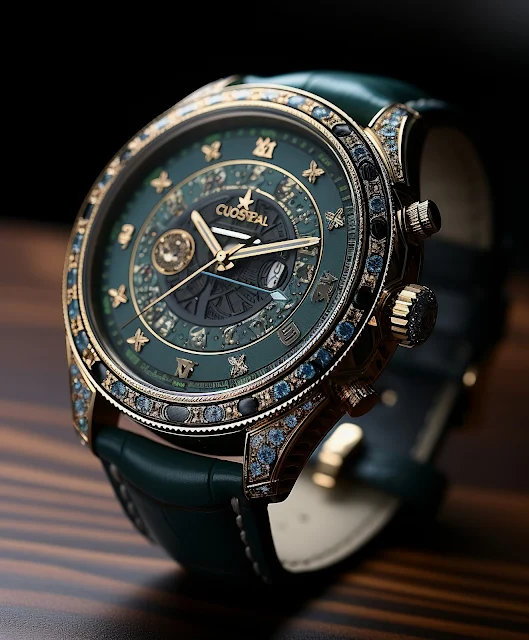A Brief Journey Through the Evolution of Watches
In the intricate dance of life, time has been our steadfast companion. The evolution of timekeeping devices, particularly watches, reflects not just technological progress but also the ever-changing landscape of human needs and desires. Join us on a brief exploration through the annals of history as we unravel the fascinating story of the evolution of watches.
1. Ancient Sundials and Water Clocks:
Our journey begins in ancient civilizations, where the first attempts to measure time took shape. Sundials, using the sun's position, and water clocks, utilizing the flow of water, were early precursors to the precise timekeeping we now take for granted. 2. The Mechanical Marvel of Clocks: As medieval towers adorned cityscapes, monumental clocks became the heartbeat of communities. The transition from cumbersome water clocks to weight-driven mechanical clocks marked a significant step forward in the pursuit of accurate time measurement. 3. The Birth of the Pocket Watch: In the 16th century, technological advancements allowed for the miniaturization of clocks, giving rise to the portable pocket watch. These intricate timepieces, often seen as symbols of status and wealth, became popular among the elite. 4. The Wristwatch Emerges: The late 19th century witnessed a shift as wristwatches began to gain popularity, particularly among military officers who found them more practical than pocket watches. The transition from pocket to wrist marked a democratization of timepieces, making them more accessible to the general public. 5. World War I and the Trench Watch: The practicality of wristwatches was underscored during World War I, leading to the widespread adoption of "trench watches" by soldiers. These watches were designed to withstand the harsh conditions of the battlefield and played a crucial role in coordinating military operations. 6. The Golden Age of Watchmaking: The early to mid-20th century is often regarded as the golden age of watchmaking. Swiss watchmakers, in particular, gained global recognition for their precision and craftsmanship. Iconic brands like Rolex and Omega emerged during this era, setting new standards for accuracy and design. 7. Quartz Revolution: The late 20th century saw a revolution with the introduction of quartz technology. Quartz watches, powered by batteries, were more affordable, accurate, and required less maintenance than their mechanical counterparts. This era marked a seismic shift in the watch industry. 8. The Renaissance of Mechanical Watches: Despite the popularity of quartz watches, a resurgence of interest in mechanical watches emerged in the late 20th and early 21st centuries. Enthusiasts and collectors embraced the intricate craftsmanship and artistry of mechanical timepieces, sparking a renaissance in traditional watchmaking. The evolution of watches mirrors our relentless pursuit of precision and efficiency in capturing the essence of time. From ancient sundials to the sophisticated mechanical and quartz watches of today, each era in the history of timekeeping has left its mark on the evolution of these fascinating devices. As we continue to embrace technological advancements, let us not forget the rich tapestry of history woven into the very fabric of the watches we wear, each one a testament to our unending quest to encapsulate the fleeting moments of our lives.








